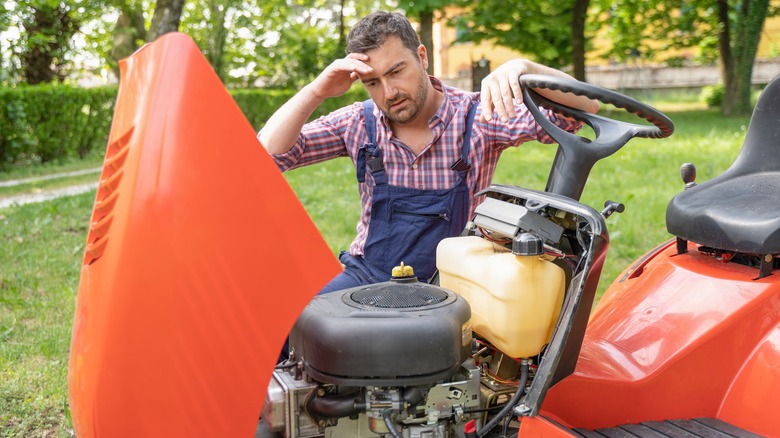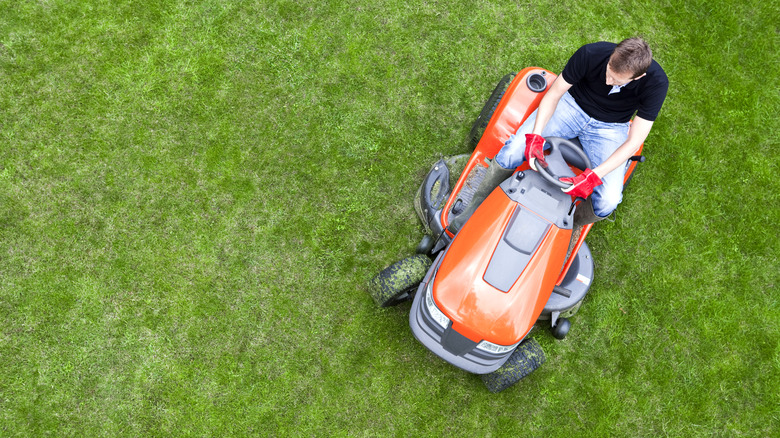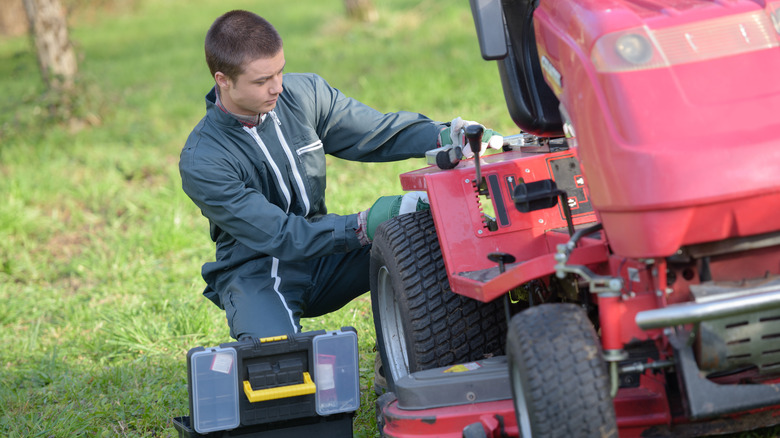How Long A Riding Lawn Mower Might Last (& Tips For Making It Go The Extra Mile)
It never fails. When you've let your lawn go for a few days and it's desperately in need of a good mowing, that's when your riding mower breaks down. Maybe it won't start, or maybe it runs great but the mower deck won't engage or it won't steer at all. But there's good news: This is probably not the end of your mower's life, just the end of your plan to mow today.
On average, you can expect to get 10 to 15 years out of your appliance if you treat it well. But lawn equipment is usually rated according to the number of hours it will operate — 450 to 500 hours for a cheap mower, 1,000 to 1,500 hours for a better brand. A typical American lawn should only take about five to 10 minutes to mow with a riding mower. Assuming yours is twice that size, and you mow 35 times per year, even an inexpensive riding mower should last almost half of a century, and that obviously isn't right. What gives?
It's all in the details, starting with the fact that sometimes we don't maintain our mowers very well. We're not small engine repair experts, after all. The other factor is that we probably replace our riding mowers at the first sign of real trouble, not at the end of their useful lives. If your mower stops steering, it feels like time to start shopping. But if the problem turns out to be a worn pinion gear in the mower's sector gear assembly, you've turned a $20 part and a couple of hours of labor into a $1,000-plus purchase.
Regular maintenance is the key
Riding mower maintenance isn't difficult. In fact, most maintenance requires a single tool and very little time. Your annual maintenance (usually done at the start of the growing season for your grass crop) includes cleaning the mower (especially the deck and engine), replacing fuel and the fuel filter, changing the oil and filter, replacing spark plugs, cleaning foam air filters (or replacing paper filters), and tightening any loose bolts and fittings. You'll also want to check moving parts for proper operation and lubricate anything that needs it (including the mandrel shafts that turn your blades, any pivot points, and anywhere there's a grease gun fitting — check your manual for details).
Some of these steps might need to be repeated throughout the year, depending on how heavily you use your mower. A few times a year, inspect your air filter, check your belts, and lubricate whatever needs lubricating. Sharpen the mower's blades every 20 to 25 hours of use, and change the oil every 25 to 50 hours (but once a year at a minimum). And before every use of your mower, check the oil and poke around to make sure nothing is falling apart physically. Because consistent use is one key to prolonging the life of your mower, consider using (and maintaining) it during the offseason. A riding mower equipped with a trailer is a godsend for other lawn maintenance chores.
Stay on top of repairs
Most simple maintenance is time-based — do X every Y hours — but plenty of things besides ordinary wear can cause a mower to break down. Rough terrain, less-than-judicious piloting, attempting to mow forests rather than lawns — all can lead to trouble. Common parts that need replacing include some expected things, such as blades, belts, headlights, and tires. Others are less obvious, like mandrel bearings, flywheel keys, alternators, starter motors, and even safety switches like the seat switch that won't let you stand up to move a dimwitted dog out of your path. In many cases, letting these repairs go will make matters worse. A dull, unbalanced blade will not only cut grass horribly, but the resulting vibration will eventually damage your engine and other parts of the mower.
So, fix things at the first sign of trouble. Mow responsibly to delay those issues. For example, a mower is for cutting lawns, not sticks and tree branches. Using it for this purpose is one of the many accidental ways of damaging a mower and can be murder on bearings, pivot points, and even the engine itself. Slow down a little and stop flinging the mower around like you're trying to drift through the corners, or plan some minor periodic steering repairs. And when something does go wrong, watch a YouTube video or read an article and fix it. You don't need to replace it yet. You should get another 22 years of life out of it, after all.


